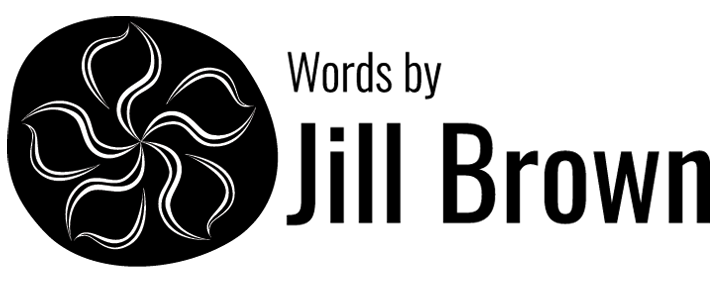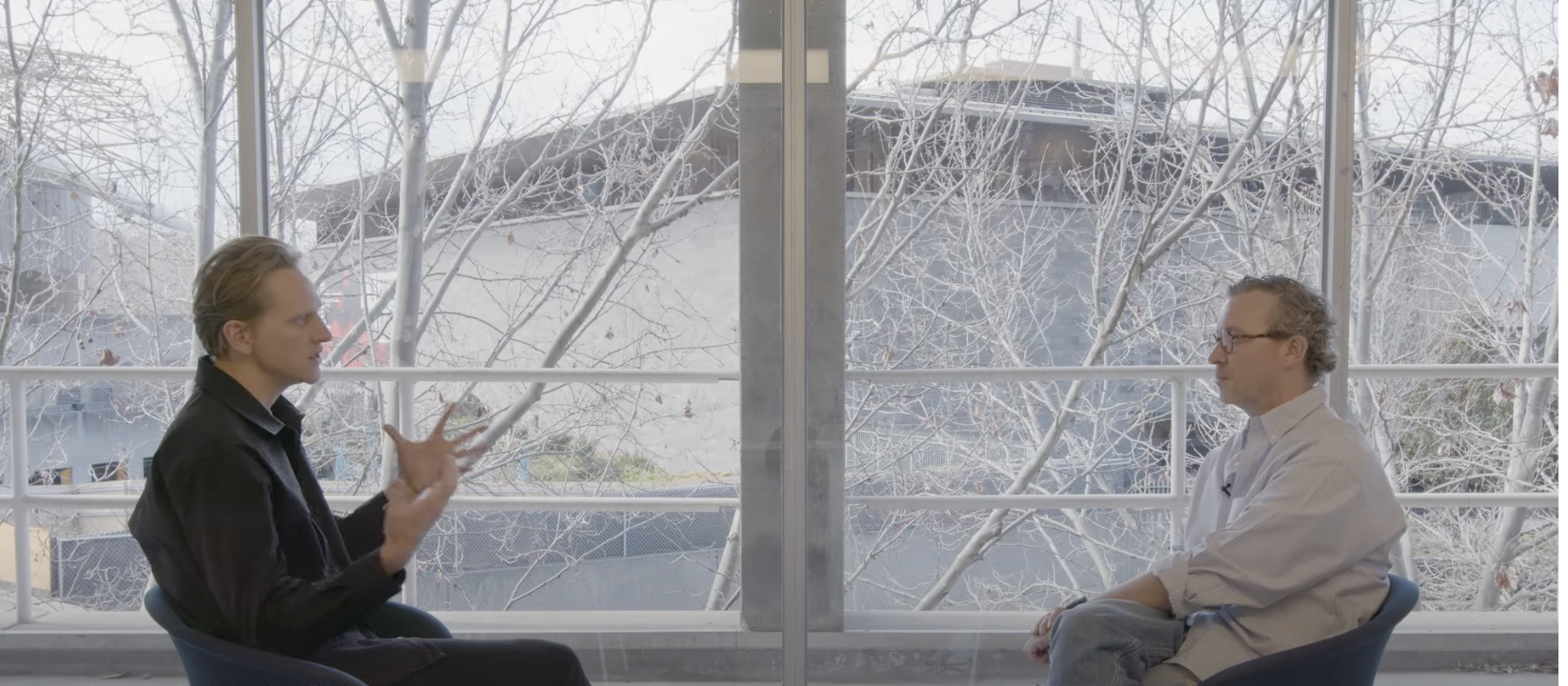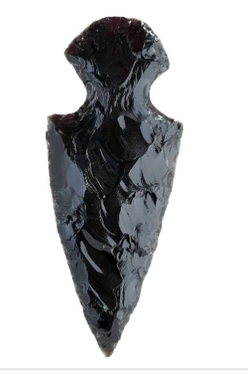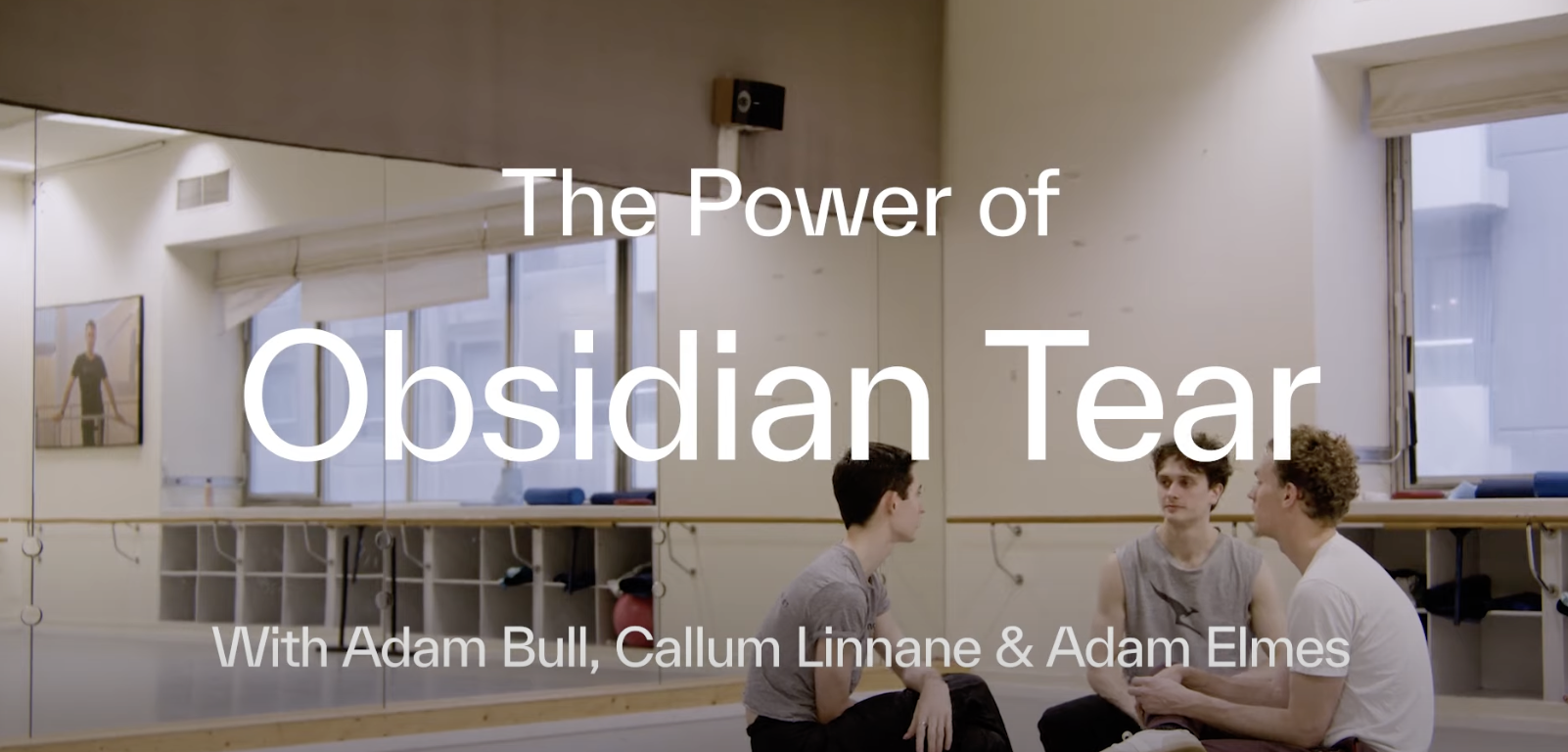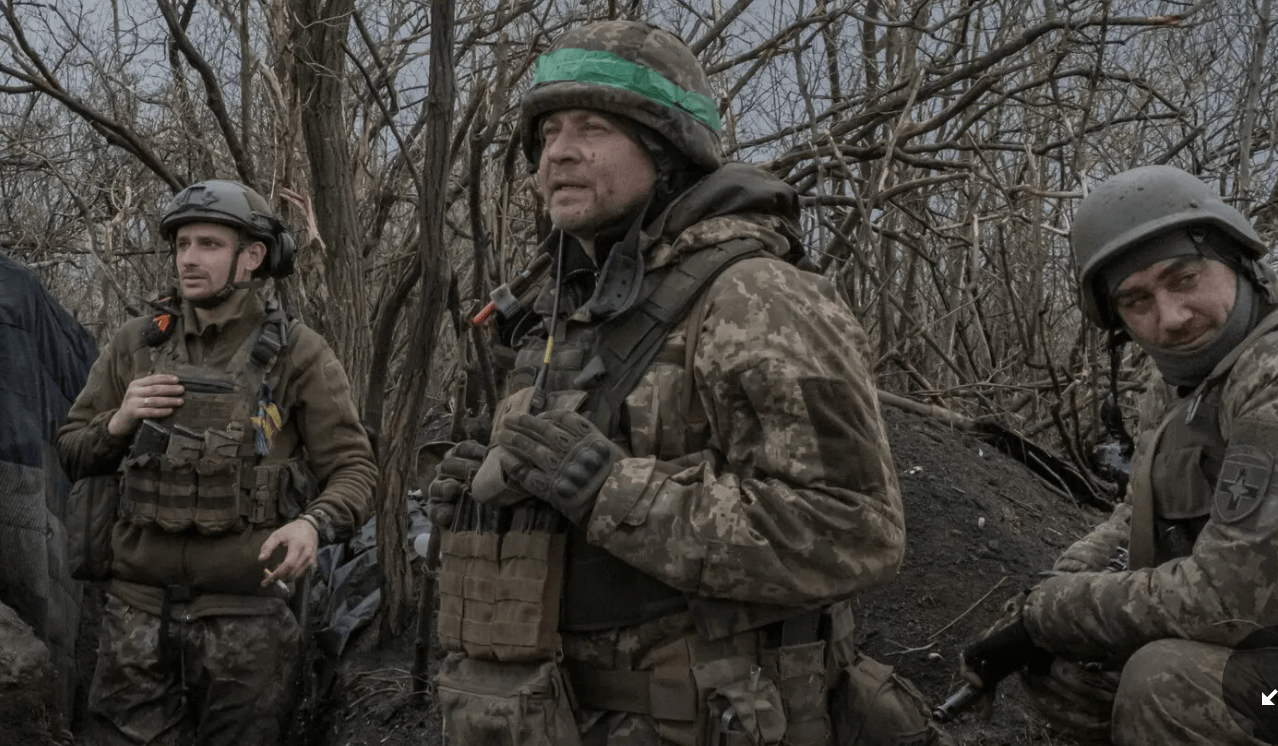Obsidian Tear
Wayne McGregor’s brutal dance poem for the ages: a close reading
World premiere: Royal Opera House: Covent Garden, May 2016
Melbourne premiere: Melbourne Arts Centre, September 2022
Sydney premiere: Sydney Opera House, November 2022
Lighting design: Lucy Carter
Fashion director: Kate Shilling
Music: Esa-Pekka Salonen
And all complexities of fury leave.
Dying into a dance
An agony of trance
An agony of flame that cannot singe a sleeve
William Butler Yeats, ‘Byzantium’
i
Making the dance
Wayne McGregor knew immediately he wanted ‘to make a choreographic response’ when he attended the premiere of Esa-Pekka Salonen’s brooding, densely contrapuntal symphonic poem ‘Nyx’ in 2011 (1). The opportunity to pour those initial reactions into a new work didn’t arise until 2016 in the form of a co-production between the Royal Ballet and the Boston Ballet. He named it Obsidian Tear and used ‘Nyx’ for the second, longer stanza of the work. He opened it to a shorter piece by Salone, ‘Lachen Verlent’ (‘Laughing Unlearnt’, 2002), a chaconne for solo violin
Wayne McGregor is a friend of The Australian Ballet. In 2006, the company commissioned him to make them a new dance—Dyad 1929—which was given its world premiere in August that year. In 2014, the company added his Chroma (first choreographed for the Royal Ballet, also in 2006) to the repertoire.
Early in his tenure as Artistic Director, David Hallberg requested to stage Obsidean Tear as a showcase for the artistry of the company’s men—McGregor created the work for an all-male cast. It formed part of a triple bill named Instruments of Dance, and was widely acclaimed by Australian critics such as Deborah Jones who said it was ‘a work that would linger in my mind longer than many others’ (2)
As McGregor responded to the music in dance, I’ve responded in turn to the dance in words. For me, Obsidian Tear delivered a sucker punch of intense feeling, and here I’d like to explain why and how
Lachen Verlent
The scene opens on a sparse, black-walled stage. There are no wings and the only lighting is a strip of orange light on the floor of the stage that hints at a volcanic source, a threat from below
A pas de deux between a younger and a slightly older man begins. They are bare-chested; the younger wears wide red trousers and the older wears black. They move in silence until the austere notes of the solo violin are heard, signalling unease and loneliness
The impetus for the movement emanates from the body’s centre and makes sensuous use of the back. The music seems to flow through the sinews, producing languid twists and rotations, long pliable ripples, deep elastic pliés and dramatic flicks. The younger man stretches backwards, raises his arms softly, opening his heart in displays of submission
There is a clear power dynamic between them. There’s a yielding delicacy and lyricism in the younger man’s movements as he seeks the other’s attention. There are mutual tender gestures but no loving feeling. The older man places his foot in the younger’s back, he slaps him, he conveys contempt through impatient finger snaps. The red garment is like a badge or uniform worn by a juvenile, someone who is unformed, subordinate, such as a novice in a religious order
The movement is not dancey in the sense of a structure of formal brackets of counts corresponding to musical notes. Rather, it seems to wander through the music and the silences within it. There is a counterpoint of music and movement that forms a dialogue between them. In a video that was filmed during rehearsal by the Royal Ballet in 2014, McGregor describes this approach as ‘dancing in thoughts’ (3). As the last notes drain away, the mood is foreboding
Nyx
The duo reappear as members of a collective. The undercurrent of violence is now made more explicit. There’s one menacing individual who seems to be a commander of sorts. The bodies of the nine men are taut, coiled-up, and they shift and swagger restlessly from pas de deux and trios to group formations and solos. While they each wear a different costume, these are similar enough to recall a uniform, indicating they are connected, like a tribe or a gang
There’s an intense awareness of interpersonal dynamics within the formations. In rehearsal, McGregor urges the dancers to ‘form an intention’ and to ‘keep it alive’ by maintaining eye contact with each other. ‘Don’t just take the arm, look at the eyes’, he says (4). Consequently there’s a sense of vigilance between the men as if they’re policing an unspoken code of behaviour from within. Something awful seems inevitable
McGregor’s choreography harnesses the power of stiffness to rebuff overtures and convey aggression. He makes use of the spin on two feet that suggests a ritualistic purpose like whirling dervishes, but joyless, without ecstasy. The encircling bodies moving around other seem to be marking territory and forming alliances, and their head butts, shoving, pushing and jumping on and off the back are supercharged behaviours, heavy with threat. Elsewhere in the choreography there long positions, legs and arms outstretched, and moves with the body off-balance, falling seamlessly into the next step with ‘easy knees’ as he calls them (5). Bodies join and separate with sinuous grace, each phrase clearly articulated
The répéteur Antoine Vereecken staged the work for The Australian Ballet. He explains in an interview with David Hallberg that, once the dancers had learned the steps, he conducted rehearsals with the studio mirrors covered (6). This was so they would concentrate on the thrust and flow of the movement rather than the aesthetics of the line of the body, such as how a foot or the head is placed, how a position looks from the auditorium. In another video produced by the company three members of the cast talk of the difficulty of male-male partnering. ‘It’s hard and you have to surrender,’ says Calvin Linnane, who dances the young man. ‘There’s a lot of trust’ (7)
The score opens with a gathering of the brass with a somewhat martial quality that dissipates into shimmering strings and then builds again with the timpani adding a sinister tone, like something is marching, on the move. Delicate passages open up only to rapidly crescendo in urgency and dissonance. Esa-Pekka Salonen’s dynamic shifts and textures allow for variegated moods, streaks of light and dark, thus opening dramatic possibilities. He states that as he grows older he realises ‘there are no simple truths, no pure blacks and whites, but an endless variety of half-shades’ (8)
The pack reacts to younger man as an outsider and at one point of high tension, he is smeared across the chest with ash. All too soon, there is an escalating dissonance in the score, which rushes to a roar of ‘100 musicians playing tutti at full throttle’ (9). As it reaches its peak, his erstwhile partner holds him up overhead and flings him off a ramp at the back of the stage
Yet this act only results in despair. It brings no respite from the harsh tribal ethos, no resolution, and he staggers while the others watch on. A mournful solo clarinet morphs into a long suspiration of strings and the piece closes when he too casts himself into the void. There’s a sense of shock as the curtain comes down, a sick recognition that violence is only ever nihilistic
Photo: © Andrej Uspenski
ii
Masculinities
In rehearsal, McGregor explains how he wishes the audience to see ‘nine vulnerable dancers’ in the sparse, non-technological set that he himself designed in which the body is all the more exposed (10). I find it striking he uses these dancers to create an unsettling display of masculine physicality and power, one that is not virtuosic in the conventional balletic sense—there no tours, barrel jumps, quadruple pirouettes, entrechats huits, no princely gymnastics or gestures. The work deals with an aspect of masculinity rarely explored with such raw intensity by a ballet company, if ever
An atmosphere of suppressed rage and conflict emerges from the interplay of music and movement and the malign vibe the men generate between them as they glance and stare at each other, pounce, goad, kill. As men do
iii
Mythos
Obsidian is a black igneous rock that occurs over geological time as a natural glass formed by the rapid cooling of volcanic lava. Obsidian tears are small ovals of the rock found in the soil
A legend of the Pinal Apaches of Arizona has it that a band of 75 men were ambushed and outnumbered in an attack from military regulars. Fifty were killed in the first volley of gunfire, and the remaining Apaches retreated to edge of Big Pocacho where they chose to leap off rather than be killed by their white enemies. Their loved ones came to grieve at the foot of the cliff and — such was their sorrow at the loss not only of their men but also of the spirit of the Pinal Apaches — that the Great Father harvested their tears and enclosed them in obsidian stones. The tears of Apache Women glint when the ovals of smooth black glass are held up to the light (11)
Since the last ice age, obsidian was a much-valued and traded by the indigenous peoples across the globe. In north America, it was prized for its lethal sharpness which was honed into deadly spear points, arrow heads and knives.
McGregor’s title is thus a hall of mirrors. ‘Tear’ can be read as referring to the myth of the Apache warriors, and, by extension, the greater mythos of the warrior who has existed in all societies through time. Equally it can be read as 'ripping’ or ‘slashing’—tearing asunder and spilling blood or guts. The meanings are tangled up and both reflect the violence on stage
Obsidian arrowhead
But obsidian was also prized for its tool-making capacity, and continues to be so to this day. It can be shaved to produce a sharper blade than steel, so that obsidian scalpels can be used for delicate surgery on the eyelids or genitals when super-fine cutting is required
Objects fashioned from the gloriously black glass have long been imbued with mystical and spiritual properties. John Dee (1527-1609) — mathematician, astronomer and alchemist at the court of Elizabeth I — had a ‘spirit mirror’ he used for the purposes of divination that is now housed in the British Museum. X-ray fluoresence has tracked the obsidian from which is was made to the Mexico of the Aztecs. There the name of the Aztec god Tezcatlipoca was ‘Lord of the Smoking Mirror,’ a reference to obsidian (12). It’s a substance freighted with centuries of myth-making across peoples and cultures
Salonen’s symphonic poem is likewise inspired by myth, that of Nyx, one of the primordial gods in the Greek pantheon who emerged at time’s beginning. She was the child of Khaos (Chaos or Air) who mated with Erebos (Darkness) and her progeny are Aether (Light) and Hemera (Day). She’s the implacable spirit of the night who draws her veil over the sky and banishes the earth to shadow. The commanding figure on stage at the very opening of the Nyx stanza is perhaps a kind of priest, invoking this harbinger of destruction
Salonen states that, while he is fascinated by the ‘nebulous’ quality of Nyx, his aim is to not to describe her ‘in any precise way’ (13). Yet his impulse to score music that throbs with chaotic vibrancy in turn becomes the starting point for McGregor’s brutal study. Both creative works resonate with the mystique, the complexities of mayhem
iv
Ambiguities
Place and time are indeterminate in Obsidian Tear. It could be set in a dystopian future or the mythic past. On his website, McGregor states that he was taken by the ‘atavistic almost mythic quality’ of Salonen’s music that is at the same time ‘ethereal and strangely futuristic’ and the studied neutrality of his production design evokes these dualities and allows the viewer to draw upon their personal associations of blood brothers and set their own scenario
Similarly, there’s an ambiguity in sexual relations. The interaction between the younger and the older man is complex—there’s tenderness, rejection, brutality and then anguish—but the nature of their relationship is unstated. Perhaps it’s forbidden and perhaps hostility towards queerness contributes to the simmering tension within the group. A hatred of difference and otherness is a source of pitiless cruelty for some, fear for others
And then there’s the matter of the young man’s murder. It’s possible to interpret it as a sacrifice, an act that recalls the Chosen One in The Rite of Spring, except that association is disrupted by the male-male violence on stage. In 1914, Igor Stravinsky wrote in a note to the conductor Serge Koussevitsky that his work was ‘unified by a single idea: the mystery and great surge of the creative power of Spring’ (14). There’s no hint of a regenerative purpose to the killing of the young man
It is equally possible to see him as neither a doomed lover nor a sacrificial offering but merely as an easy target because of his youth and low status. The violence meted out to him serves as a means of reinforcing group behaviour, keeping the other men in line, forcing the older man to show tribal loyalty. Thus, the act of murder stands as a proxy for all kinds of power behaviours that emerge within bands of men and the young man as a proxy for all the marginalised, subjugated, oppressed victims of their violence
iv
Meanings
McGregor collaborated with the dramaturg Uzma Hameed of the Boston Ballet to create a world within the confines of the stage that is at once abstract but coherent and recognisable. There have been reservations about the dramaturgy. At least one critic found his depiction of the younger man as persecuted outsider ‘overliteral’ (15). Deborah Jones thought that the work could have ended at his death and that ‘what happens afterwards veers towards the sentimental’ (16)
McGregor himself links the vehemence in the dance with the volcanic might implied in the title when he states that the central concern of the piece is ‘how interior forces like violent emotion materially shape the geology of our surroundings, in the same way as they become archived in our DNA’ (17). Elsewhere he states that he wants ‘multiple narratives to appear’ and he’s happy for the piece to be ‘challenging’ (18). The Australian cast member Adam Elmes who dances the older man notes, ‘Why shouldn’t you come to the theatre and be challenged and not just be given something easily?’ (19)
‘Dancing in thoughts’ is an allusive process. Thoughts meander, they tend towards wisdom, towards madness. Poetry is another medium in which meaning can be fruitfully inferred and intuited. In Yeats’ poem ‘Byzantium’ the reader knows that the place where ‘The unpurged images of the day recede’ is not in a street in present-day Instanbul, but in a shadowy, archaic world and the sense of place is all the more vital for not being an actuality (20). The five stanzas wander from one location to another but the poem is too abstract to tell a story. Rather it depicts a series of eerie moments somewhere between the physical and the spiritual worlds
‘Byzantium’ is about the immortal perfection of art arising from the ‘complexities of blood and mire’ of mortal imperfect artists and this thought itself becomes a work of art through the masterful weaving of the poet’s imagery, diction and rhythm
For me, the genius of Obsidian Tear lies in McGregor’s deliberate ambiguities that provide space for ‘multiple narratives’ to gallop in. Powerful meanings emerge from its negativities: by not being specific, by not being contextual, he mobilises allusion and emotion to fuel his dance poem on the ‘furies and the mire of human veins’ (21). As he says: ‘We don’t live in concreteness’ (22)
Obsidian Tear is not didactic but it is serious about its dark subject matter. As with Salonen’s score, there are ‘no simple truths’ (23). The work sustains a mood across both parts that belongs to the realm of Nyx, a monstrous landscape where dreams may come. It tunnels into the imagination and unearths the capacity inherent within modern dance to give shape and form to the unfathomable
v
Concluding thoughts
A night at the ballet not generally associated with concepts that ripple profoundly through all of society. McGregor choreographed the work at the time when ISIS jihadis were executing gay men by throwing them from the roofs of buildings, which adds another layer of bitter poignancy to the death of the young man
Obsidian Tear is possibly even more politically charged now than it was in 2016, those long-ago days, pre-pandemic, pre-Ukraine, pre-apocalyptic fire and rain. Now it’s likely to recall the Oath Keepers and the Wagner Group and to be imagined as set in a dystopia of bombings and climate disaster. It’s a piece for a world in conflict, beset by ultra-nationalism, militarism and authoritarian displays of masculine status
Photo: © Mauricio Lima, New York Times
This political dimension arises from a mature artistry, McGregor’s sensitivity to wider concerns beyond the proscenium arch and his dexterity in reflecting them back to the viewer. The critic Roslyn Suclas called the work a ‘breakthrough for Mr McGregor’ whose choreography has previously been ‘criticised for a distinctive hyper-kineticism’ (24). Just as Yeats creates a work of poetic art about base human matter, he makes beautiful dance from the darkness of the psyche. His physical intelligence blazes through the bodies of his nine vulnerable dancers and demands the viewer reconsider all that’s archived in their DNA
Bonus material
The productivity guru of modern dance (Photo: © Evening Standard)
‘The body is the most technologically literate thing we have’
Wayne McGregor, TEDGlobal, 2012:
A choreographer’s process in real time
Wayne McGregor CBE is a British modern dance choreographer and director who has ascended the Himalaya of the performing arts
He has attained that rare artistic status whereby reputation feeds into commissions beyond the international dance world into other domains such as visual art and film that, in turn, enhance reputation and so on
There are other thoughtful choreographers of innovative modern dances of lasting worth around—such as William Forsythe and Russell Maliphant—but none who possess McGregor’s audacity, his facility to create a work that’s spectacular and daring yet cerebral. His work fulfils Diaghilev’s famous dictum to Cocteau Etonne moi, Jean, and he can bring to the opera house the dance lover who wouldn’t attend a performance of The Sleeping Beauty. For those in the business of building audiences, that’s a highly attractive proposition
Here’s a condensed CV—
Wayne McGregor is the artistic director of Studio Wayne McGregor, an arts organisation in Here East, Queen Elizabeth Olympic Park that he founded in 2017 to house his mulitfarious interests and enterprises in dance, design and technology. The space serves to support a network of creatives including dancers and coders, composers and scientists
He is artistic director of his eponymous touring dance company, Company Wayne McGregor, for which he has created 30 works, and he is resident choreographer of the Royal Ballet, for which he has created 20
Elsewhere, he has been commissioned to make new works for major ballet companies in Europe and the US, such as La Scala Theatre Ballet, American Ballet Theatre, New York City Ballet and Rambert. His output appears in the repertoire of further companies, such as the Bolshoi Ballet, Mariinsky Ballet, Alvin Ailey American Dance Theatre and The Australian Ballet
Beyond the world of dance, he has been movement director for several big-budget films such as Harry Potter and the Goblet of Fire, The Legend of Tarzan, Mary, Queen of Scots and Sing. He has directed opera at La Scala and the Royal Opera House and choreographed for theatrical productions at the Old Vic and the National Theatre (among prestigious others)
He has choreographed music videos (Radiohead, The Chemical Brothers), fashion shows and advertising campaigns (Gareth Pugh, COS, Selfridges). In 2022, he choreographed ABBA Voyage—that comeback concert, the one featuring virtual avatars of the band
He has collaborated far and wide with, inter alia:
composers (Max Richter, Steve Reich, John Tavener, Jamie xx)
visual artists and designers ( Thierry Mugler, Olafur Eliasson, Ben Cullen Williams)
photographers (Nick Knight, Robin Friend)
architects (We Not I)
writers (Margaret Atwood, Audrey Niffenegger, Uzma Hameed)
Most recently, he was appointed Director of Dance for the Venice Biennale until 2024
McGregor has been nominated for and has won prestigious critics awards each year since 1996 (apart from 2020, that year). He was awarded a Commander of the Order of the British Empire in 2011 for Services to Dance when he was still only 40, and he was graced with a Lifetime Achievement Award at the Prix de Lausanne in 2021
Academia has also appeared bearing gifts. He is Professor of Choreography at the Trinity Laban Conservetoire of Music and Dance and he is part of the Circle of Cultural Fellows at Kings College London. And in addition to being awarded an Honorary Fellowship of the British Science Association, he holds these degrees:
Honorary Doctor of Science (UPlymouth)
Honorary Doctor of Letters (ULeeds, UChester)
Honorary Doctor (UArts London)
If nothing else, there’s your productivity guru, right there
References
1 McGregor, Wayne. ‘Obsidean Tear’, website page, 2016
https://waynemcgregor.com/productions/obsidian-tear/
Accessed Mar 2023
2 Jones, Deborah. ‘Instruments of Dance, The Australian Ballet, Sydney Opera House, 10 November 2022, blog post
https://deborahjones.me/2022/11/12/instruments-of-dance-the-australian-ballet-sydney-opera-house-november-10-2022/
Accessed Mar 2023
3 The Royal Ballet. ‘Wayne McGregor rehearses Obsidian Tear’, video of in-studio livestream, May 2026
https://youtu.be/iTz94o5-CR4
Accessed Mar 2023
4-5 The Royal Ballet. ‘Wayne McGregor rehearses Obsidian Tear’, video
6 The Australian Ballet. ‘Hallberg in conversation with Antoine Vereecken’, in-studio video, November 2022
https://youtu.be/pNq45vLfLn8
Accessed Mar 2023
7 The Australian Ballet. ‘The power of male dancers in Wayne McGregor’s Obsidian Tear’, in-studio video, November 2022
https://youtu.be/wczJbNRu-eE
Accessed Mar 2023
8 Salonen, Essa-Pekka. ‘Nyx’, Wise Music Classical, catalogue note, 2011
https://www.wisemusicclassical.com/work/46218/Nyx--Esa-Pekka-Salonen/
Accessed Mar 2023
9 Salonen, Essa-Pekka. ‘Nyx’ catalogue note
10 The Royal Ballet. ‘Wayne McGregor rehearses Obsidian Tear’, video
11 First People. ‘Apache Teardrop: An Apache Legend’, firstpeople.us, website page
https://www.firstpeople.us/FP-Html-Legends/Apache_Tear_Drop-Apache.html
Accessed Mar 2023
12 Robbins, Jim. ‘Obsidian Cliff: Humanities toolshed for the last 11,500 years’, New York Times, 20 Mar 2023
13 Salonen, Essa-Pekka. ‘Nyx’ catalogue note
14 Van den Toorn, Pieter. Stravinsky and the Rite of Spring: The Beginnings of a Musical Language. Oxford University Press, 1987, pp 26-7
15 Suclas, Roslyn. ‘Obisidian Tear is a choreographic breakthrough for Wayne McGregor’, New York Times, 31 May 2016
https://www.nytimes.com/2016/05/31/arts/dance/review-obsidian-tear-is-a-choreographic-breakthrough-for-wayne-mcgregor.html
Accessed Mar 2023
16 Jones, Deborah. ‘Instruments of Dance’, blog
17 McGregor, Wayne. ‘Obsidian Tear’, website page
18 The Royal Ballet. ‘Wayne McGregor rehearses Obsidian Tear’, video
19 The Australian Ballet. ‘The power of male dancers’, video
20 Yeats, William. ‘Byzantium’. The Collected Poems, Pan Macmillan, 1982
21 Yeats
22 The Royal Ballet. ‘Wayne McGregor rehearses Obsidian Tear’, video
23 Salonen, Essa-Pekka. ‘Nyx’ catalogue note
24 Suclas, Roslyn. ‘Obisidian Tear is a choreographic breakthrough for Wayne McGregor’, review
